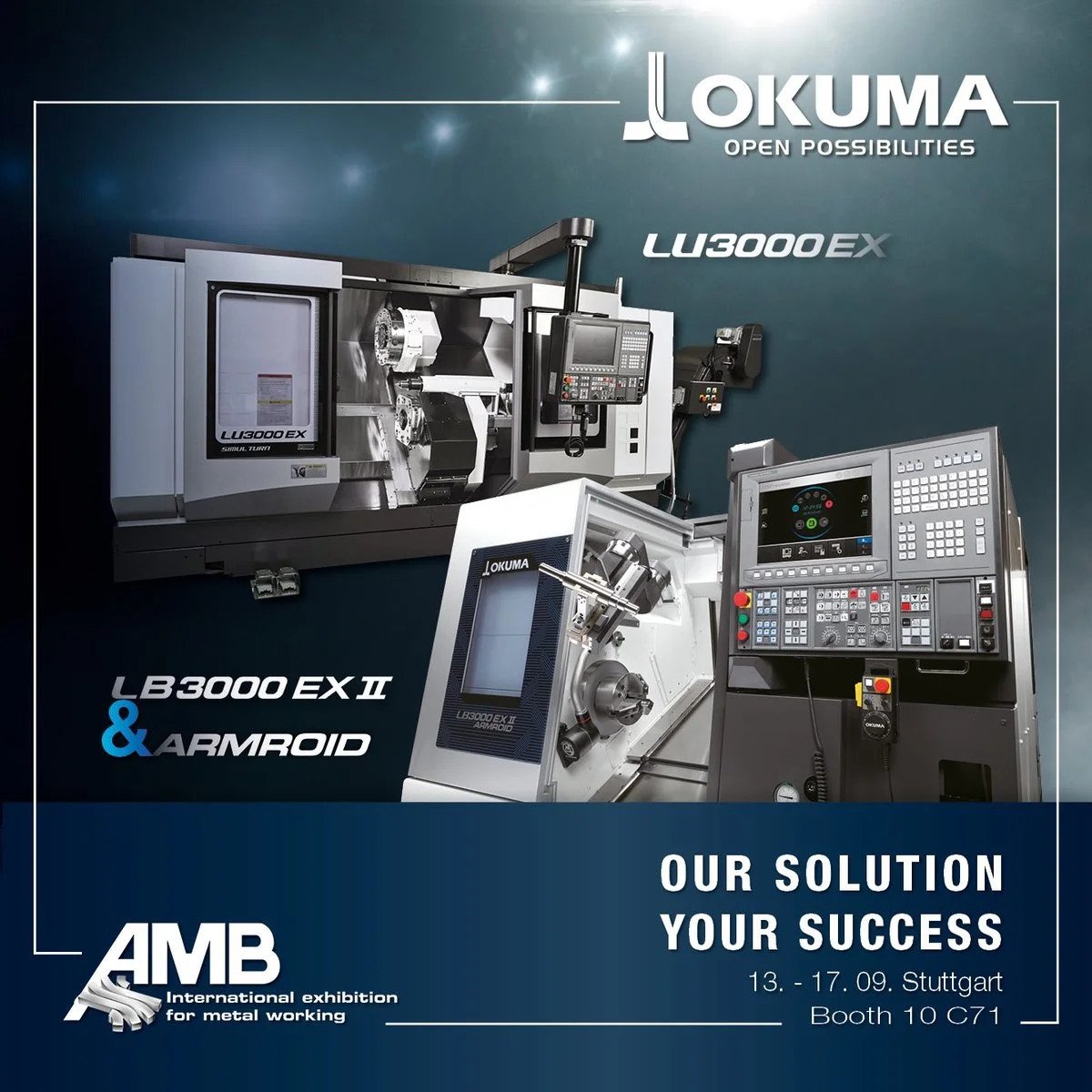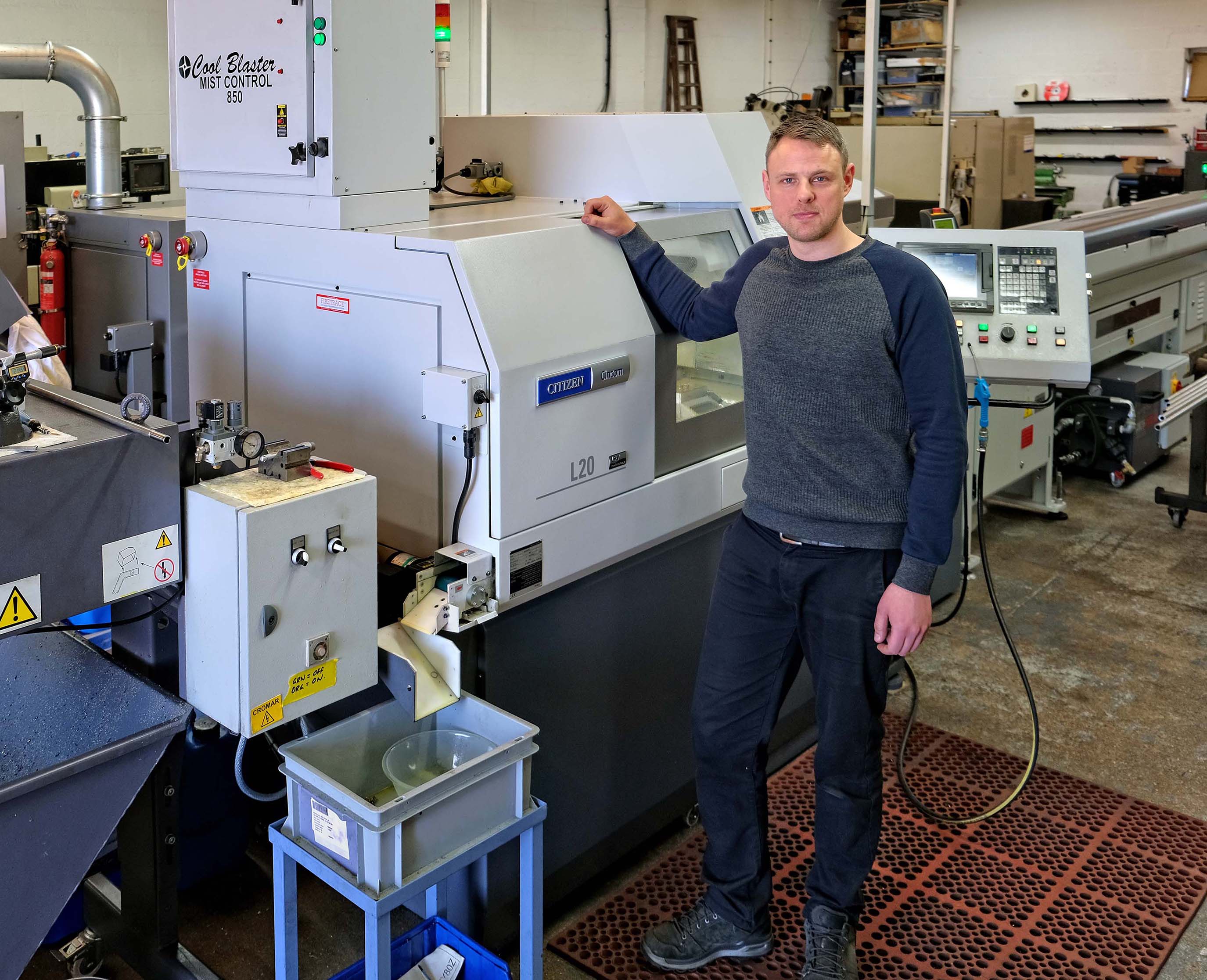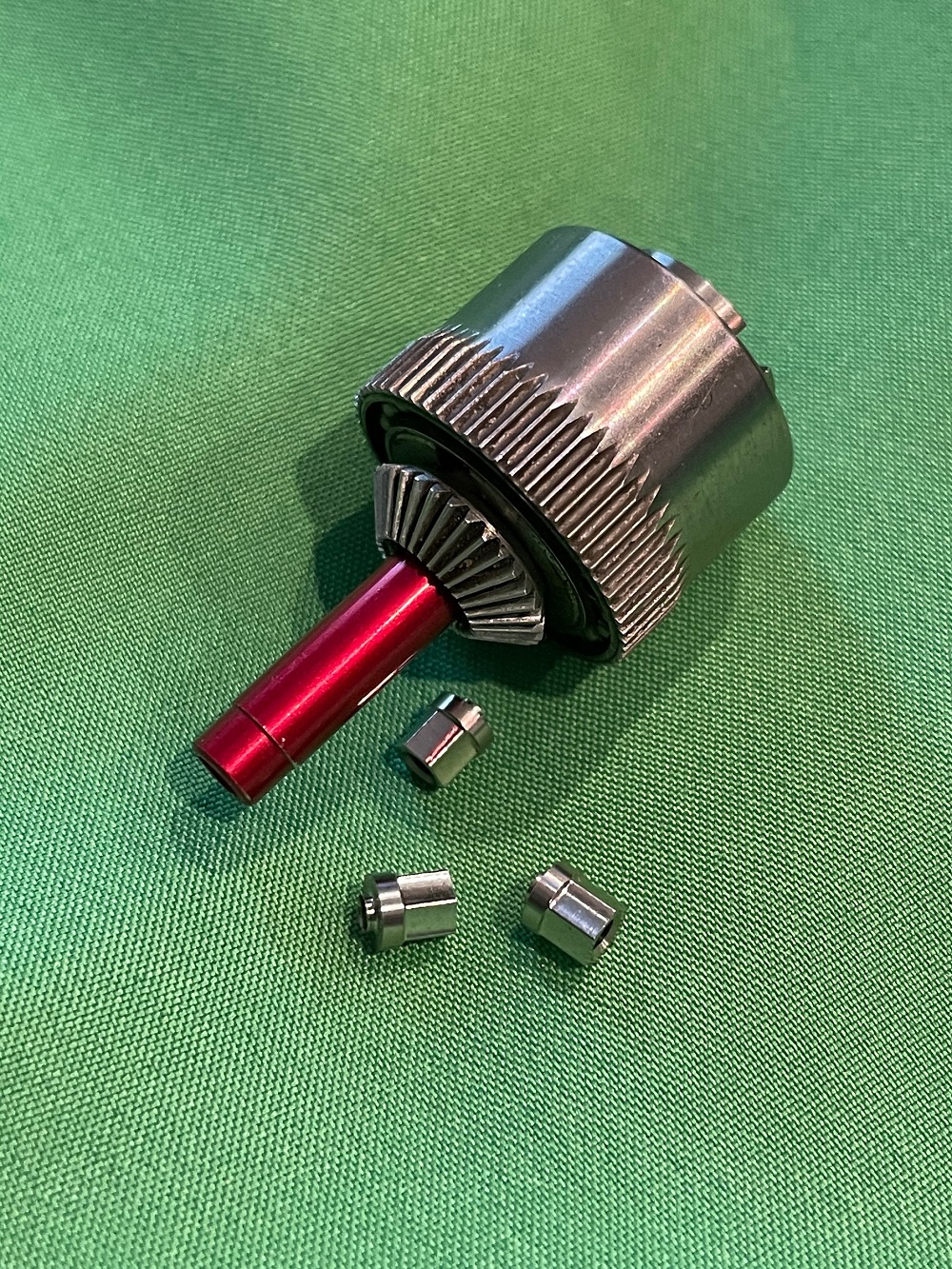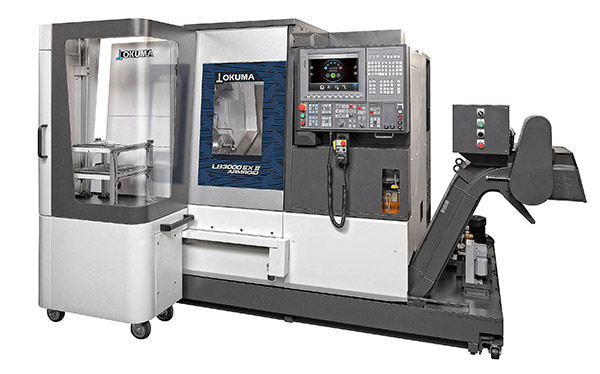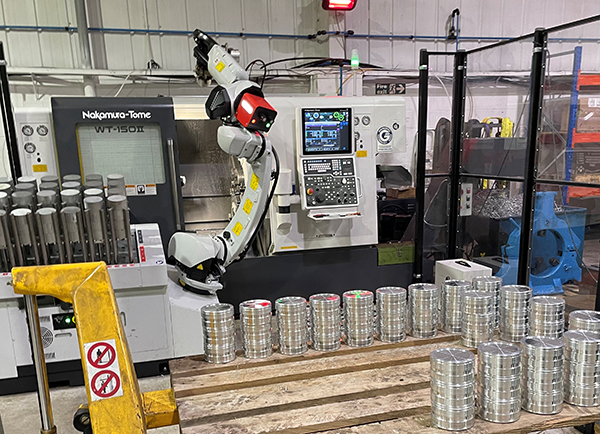Okuma Deutschland GmbH, the German representative of CNC machine tool manufacturer Okuma Corporation Japan, is travelling with its metalworking technologies to AMB 2022 in Stuttgart on 13-17 September. Apart from the LU3000EX, an innovative machine tool for simultaneous four-axis turning, Okuma will show the proven LB3000 lathe, a machine that offers maximum automation in association with the Armroid jointed-arm robot.
Due to its heavy and robust construction, generously dimensioned flat-bed guides and high-torque drives, the LU3000EX is optimally suited for workpieces with a large L/D ratio, as well as for materials that are difficult to machine. Apart from that, the lathe shows its real advantage when using two turrets that work synchronously with double feed or simultaneously. As a result, users can reduce cutting times by up to 50%, reports Okuma, while times per piece and production costs can be cut significantly. This means that the investment in the second turret usually pays for itself after about six months.
In addition, Okuma’s own OSP control system ensures easy operation and simplifies dialogue programming of the LU3000EX.
With the LB3000 Armroid, Okuma will present a universal lathe with a fully integrated robot arm. This successful lathe is particularly suited to the production of universal turning parts and the complete machining of complex workpieces in small and medium batch sizes.
Combining it with the fully integrated Armroid jointed-arm robot enables automated operation, as the robot can load and unload the machine, and perform other important tasks. The user-friendly robot control with Okuma’s proven OSP control system automatically calculates the fastest collision-free path for the Armroid.
For further information http://amb-2022.okuma.eu






